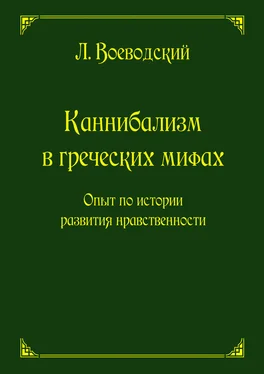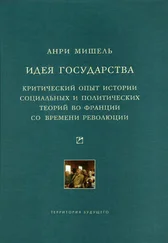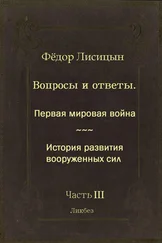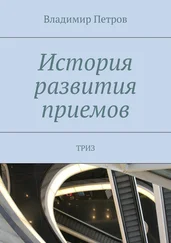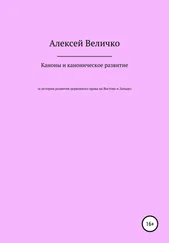432
См. выше § 17.
433
Diod. XX, 14. Cp. Ghillany, стр. 192 слл.
434
Caesar, В. Gall. VI, 16: Alii inmuni magnitudine simulacra habent, quorum contexta viminibus membra vivis hominibus complent; quibus sucecusis circumventi flamma exanimantur homines. Strab . IV, 4, 5 (198). Ср. выше, цитата о массагетах, которые жертвуют людей вместе с животными и потом съедают. Впрочем, приведённое место Страбона очевидно искажено: что значит колосс из сена? Тем не менее ввиду множества новых сведений, которые он сообщает, нет основания полагать, что это место заимствовано им и искажено из Цезаря.
435
Plin . II. X. XXX, 4 (1): Britannia hodieque cam [т. е. artem magicam] attonite celebrat tantis cerimoniis, ut dedisse Persis videri possit. Adeo ista toto mundo consensere, quamquam discordi et sibi ignoto. Nec satis aestimari potest, quantum Romanis debeatur, qui sustulere monstra, in quibus hominem occidere religiosissimum erat, mandi vero etiam saluberrimum.
436
Strab. XI, 11, 8 (520). Cp. Ael. V. II. IV, 1. Умерших раньше 70 лет они не едят не потому, что предпочитают мясо старцев, а по той же, конечно, причине, по которой все каннибалы пренебрегают мясом умерших от болезни или вообще естественной смертью, точно так же, как и мы не употребляем в пищу падали. Пожирание трупов встречается только в очень исключительных случаях. В приведённом месте замечательно также отождествление человеческой жертвы с животной: они не приносят в жертву и не едят животных женского пола, и поэтому не едят также и женщин.
437
См. выше.
438
Herodot. IV, 26: вот один из тех исключительных случаев, в которых любовь к родственнику – подобно тому, как в иных случаях голод – является достаточным мотивом, чтобы заставить есть мясо умершего, что, как видим из нашего примера, облегчалось тем, что его смешивали с мясом других животных.
439
См. выше.
440
J. Grimm, Deutsche Rechtsalterthümer, стр. 488: über den wendisсhen gеbrаuсh in Wаgrien hаt Zeiler epist. 529 fоlgende nähere Stelle: es ist ein ehrliсher Brаuсh im Wаgerlаnde gleiсhwie in аndern Wendlanden gewesen, dass die Kinder ihre altbetagten Eltern, blutfreunde und andere verwаndten, auch die so niсht mеhr zum Kriege oder Arbeit dienstliсh, ertödteten, darnach gekocht und gegessen oder lebendig begraben, derhalben sie ihre Freunde nicht haben alt werden lassen, auch die alten selbts lieber sterben wollen, als dass sie in schwerem betrübtem alter länger leben sollen. Dieser brauch ist lange Zeit bei etlichen Wenden geblieben, insonderheit im lüneburger Land, ein weit älteres zeugniss giebt N. [Weisthum a. 1602?] Cap. 105: aber Weletubi, die in Germania sizzent, tie wir Wilze heizen, die ne scament sih nicht ze chedenne, das sie iro рarentes mit meren rehte czen sulin, danne die wurme. Об обычае вендов или венедов (славян) сжигать жен вместе с телом умершего мужа см. Котляревского , «О погреб. обыч. славян», стр. 46 слл., где на стр. 49, прим. 2, указана и литература об этом названии.
441
Herodot. IV, 61.
442
См. выше § 19 и Hermann, Ant. II, § 28: gewöhnlich erhielten die Gotter das Fett und von jedem Gliede etwas… während das Uebrige zum Schmause der Menschen verwendet ward, der so nothwendig mit jedem Opfer verbunden schien, dass beide Begriffe sich im Sprachgebrauche fortwährend durchkreuzen, с прим. 23, где к числу примеров стоило прибавить Aesch. Ag. 137, об орлах.
443
Ср. Suchier, ук. соч. стр. 5; Omnino statuendum est, omnes gentes, quae carne humana vescebantur, hominum caede aras inquinavisse, quum communis sit populorum incultorum opinio, deos iisdem, quibus ipsos epulis delectari.
444
Herodot. IV, 62: своим мечам, заменяющим изображение бога войны.
445
Herodot . IV, 64, см. выше.
446
Strab . IV, 5, 4 (201).
447
Plut. Is. et Osir. 73; также Athen. IV, 172.
448
Porph . Abst. 55.
449
Herodot. II, 45.
450
Prichard, Aegyptische Mythologie, übers. von Haymann (1837), стр. 303: Denon hat die Ceremonien der Menschenopfer ausdrücklich in dem Tempel zu Modinet-Abou abgebildet gefunden; und Hamilton hat uns eine vortreffliche Beschreibung eines ähnlichen Vorfalles geliefert, den uns das Täfelwerk eines Gemachs in dem Tempel der Isis zu Tentura darstellt: die Figur eines Menschen mit dem Kopf und den Ohren eines Esels (заметим, что ослы считались животными, посвященными тому же Тифону, которому приносились в жертву и люди) sieht man auf dem Boden knieend und an einen Baum gebunden. In seiner Stirn stecken zwei Messer, zwei in seinen Schultern eines in seinem Schenkel und ein anderes in seinem Unterleibe. Fünf Priester, welche Habichts-und Hundeköpfe haben und Messer in ihren Händen halten, stehen in einer Reihe dahinter. Der Gott ist in langen weissen Gewändern gekleidet und hält den Krummstab und die Wanne des Osiris in seinen Händen.
451
Wilkinson Manners und Customs of the Ancient Egyptians, V (= second Series, II, 1841), стр. 342, прим. 5: The men put to death in the ceremonies represented in the tombs of the kings appear to be either Neophytes, who were required to «pass under the knife of the priest» previous to initiation, and a new ife; or those condemned to a particular fate hereafter. При этом он ссылается на другое место своего сочинения. I (first Series), стр. 267, где сказано только, что ceremony of passing under the knife of the Hierophant, was merely emblematic of the regeneration of the neophyte. Насчёт же самого существования подобного обряда он говорит в примечании, там же: I suppose some of the headless figures in the tombs of the kings, at Thebes, refer to this ceremony. Вот и всё, что мы у него находим в подтверждение его мнения.
452
Там же, V, стр. 343, прим. 2: The learned Prichard thinks that a subject described from the temple of Tentyra proves this custom to have existed in Egypt. But that temple is of late Ptolemaic and Roman date, and «the figure of а man, with the head and ears of an ass…» can scarcely the an argument in favour of a human sacrifice, unless men or that description were proved to have lived in those days.
453
Там же, стр. 343: Indeed, if from this any one were disposed to infer the existence of such a custom in former times, he must admit that it was abandoned long before the erection of any existing monument, consequently ages prior to the accession of the Amosis, whose name occurs in the sculptures; long before the Egyptians are mentioned in sacred history; and long before they were that people we call Egyptians. For it is quite incompatible with the character of a nation, whose artists thought acts of clemency towards a foe worthy of record, and whose laws were distinguished by that humanity which punished with death, the murder even of a slave. (Особенно последнее обстоятельство тут ничего не доказывает: в Греции подобным образом воспрещалось убивать рабочего быка). Ср. там же стр. 341: But from its being (т. e. человеческих жертвоприношений) directly contrary (?) to the usages of the Egyptians, and totally inconsistent with the feelings of a civilised people, it is scarcely necessary to attempt a refutation of so improbable a tale: and Herodotus justly blames the Greeks for supposing «that a people to whom it was forbidden…» и т. д. Относительно «the feelings of a civilised people» смотри, что он сам говорит о презрении, в котором находились у египтян все красноволосые люди, там же, стр. 344 сл.
Читать дальше
Конец ознакомительного отрывка
Купить книгу
